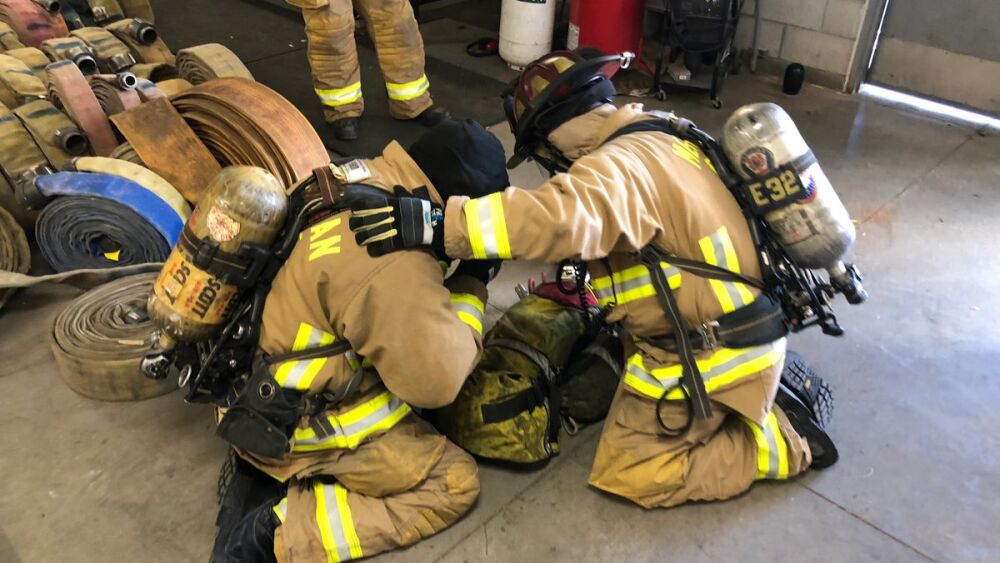There are three major treatments for cancer: Radiation, chemotherapy and immunotherapy, each designed to control, shrink or even clear cancer cells. Much like a three-legged stool, these treatments are separate, equal yet interdependent. They are the salvation we need to destroy cancer, with chemotherapy serving as the treatment by which all other treatments are measured – the literal lifeline to promoting quality of life.
It must be understood that when talking about quality of life, cancer has no respect for time or treatment. My second scan and fifth chemotherapy treatment were conducted over the July 4th weekend. My diagnosis, nine weeks prior, was made on my son’s birthday. Two days later, after an emergency run to Denver, I had surgery to remove massive tumors on my spine. The surgeon committed to eight hours of surgery to give me another three months of living. It was a trade I readily accepted.
The “leftovers” are Stage 4 metastasized esophageal cancer cells – non-operable and, by definition, terminal. The challenge now is whether cancer has me or I have cancer. Time will tell. And until then, chemotherapy is my lifeline.
Chemotherapy basics
The object of chemotherapy is to match the myriad chemicals to the type of cancer specific to the patient and all of the patient variables. How much and how often you go in for chemo depends on the type and severity of the scan taken at the beginning of the journey to prolong life.
When it goes well, it is a course of treatment that slows down and shrinks cells, some good but mostly bad cells. It is a lengthy and grueling process but one often shared with other chemo patients – and that helps. Eligibility for chemo treatments is based on white and red blood cell counts. Too low and you make adjustments, as lower cell counts indicate a vulnerability to infection, both external and internal to the patient.
The most severe cases are met with medical personnel in Level B hazmat suits visiting you in your own room. The drips can take up to two hours to inject, and in some cases another chemical solution is brought home in a portable pump to be administered over a 48-hour period. Most patients with a lengthy schedule are implanted with a port that’s designed to accept repeated injections for blood draws, infusion and emergency injections.
While the lead physician may ask quite offhand if you would like a port or have individual “sticks” during every session, the nurses will wave quietly in the background and not hesitate to recommend the port. You will be glad you listened to the nurses.
The chemo team
A good chemo team keeps patients up to date on all information related to their case. The team, much like the radiation team, takes effective strides in clear communications, honest numbers and appropriate answers. Dialing in the proper measurements for a stable outcome is the duty of the entire chemo team, and if you’re the patient, you sit at the head of the table for those meetings.
You will know your nurses and technicians by name as they become the go-to resource for everything from chemical application and monitoring to retrieving a warm blanket. Volunteers become like family, providing a sympathetic ear and a willing hand.
Physician assistants evaluate your complete profile for every session, asking questions and taking notes on everything from weight loss to numbness, sleep disturbance and pain management to overall attitude.
Your doctors, one for each treatment type, see you for scan determinations and the big issue at hand – treatment success versus quality of life. At some point for inoperable (terminal) patients, both will deteriorate, as all things must come to an end. Knowing when you are going to die changes everything.
Read next:
What would you do to save a firefighter?
Joining the National Firefighter Registry is a simple way you can help protect protect current and future firefighters
Our role as patient
Patients must be honest about their challenges, mentally and physically, while enduring the aftereffects of chemotherapy. Asking questions is the cornerstone of patient care, and with chemotherapy there are a great many.
Couched in comfortable tall-back lounge chairs while connected to a web of plastic tubing, new patients filled with angst and inquiries find answers in old-soul revelations from neighbors. Amid the mild hum of regimented drip machines and the sound of lunch, conversation is often directed toward chemo’s side effects and the sharing of symptoms and remedies. Sage and quiet advice comes from the one patient who is leaving to live out their last moments with family.
Physically, patients become aware of fatigue and weakness and the various forms of “chemo brain” – a cognitive condition that seems to account for all outbursts, confusions and character weaknesses displayed by those afflicted. It is critical to look for delayed decision-making, physical miscalculations and in some cases loss of common motor skills. These symptoms can stimulate irritation and short-tempered flare-ups. And then there’s the overwhelming desire for a nap. The good news is that most side effects, including the big ones, are relatively short in length.
Some patients experience heavy limbs followed by bone and muscle discomfort. Others have constricted breathing or difficulty with balance. Some lose their hair while others struggle with weight. In a few cases, patients complain of general sickness and gas. Nausea is the big bad wolf in the chemo forest of side effects, causing most patients discomfort at least some of the time during their treatment. A piece of toast or fruit can sometimes quiet the discomfort.
Nausea drugs, while effective, can affect metabolism and cardio stability. Steroids can stabilize many side effects, including nausea, but overuse can interfere with cell growth, contraindicated in the overall chemo treatment strategy. Numerous chemicals are managed in varied concentrations over a course of exact timing, each area open to modification as evidenced by the numbers. These decisions become more difficult as you extend your treatment time and the subsequent need for more powerful solutions as indicated by further scanning – critical balancing acts made to extend life.
Home remedies
As for home remedies to combat side effects, many patients prefer the properties of over-the-counter Claritin, an allergy medicine that seems to contribute to a lessening of bone and muscle pain. Others swear by medicinal marijuana. The regular use of stool softeners like Colace and powdered laxatives like MiraLAX control constipation and diarrhea, as MiraLAX taken night and day is especially appreciated during actual treatment days.
Some patients looking for relief are adamant about exercise and a commitment to movement to regain strength lost every day. Others boil life expectancy down to balance and moderation, content to move only as needed to minimize negative effects and preserve energy.
The middle miles
Chemotherapy treatments are the middle miles of an extensive trip, complete with all the monuments and geography of any journey taken by way of a catastrophic turn. It is during this chemical excursion that you become acutely aware of longevity – and the fact that life extension relies on the effectiveness of a constant biological attack scheduled for the duration of your cancer’s existence, however long or short.














